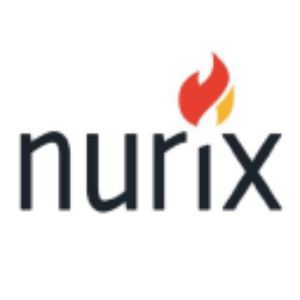Nurix Therapeutics Presents Updated Positive Data Demonstrating Durable, Deepening Responses in Ongoing Clinical Trial of Bexobrutideg (NX-5948) Monotherapy in Patients with Relapsed/Refractory Chronic Lymphocytic Leukemia (CLL) and Waldenström Macroglobulinemia (WM)
Rhea-AI Summary
Positive
- High objective response rates: 80.9% in CLL patients and 84.2% in WM patients
- Achievement of complete response in CLL patient with over two years of treatment
- Well-tolerated safety profile with no new onset atrial fibrillation
- Effective across all patient populations regardless of prior treatment or mutations
- Demonstrated activity in high-risk patients including those with CNS involvement
- On track for pivotal trials initiation in 2025
Negative
- Two treatment emergent adverse events led to drug discontinuation in WM patients
- Common adverse events include purpura/contusion (45.8%), neutropenia (29.2%), and thrombocytopenia (22.9%)
News Market Reaction 1 Alert
On the day this news was published, NRIX declined 5.30%, reflecting a notable negative market reaction.
Data tracked by StockTitan Argus on the day of publication.
Complete response achieved in CLL; overall objective response rate of
Bexobrutideg was well tolerated with no new safety signals observed with longer duration on study or higher doses
Data reinforces Nurix’s scientific leadership and platform strength in targeted protein degradation
Nurix remains on track to initiate pivotal trials of bexobrutideg in 2025
Data are being presented at the 30th European Hematology Association Congress (EHA2025)
Company will host a webcast conference call today, June 12, 2025, at 8:00 a.m. ET (2:00 p.m. CEST)
SAN FRANCISCO, June 12, 2025 (GLOBE NEWSWIRE) -- Nurix Therapeutics, Inc. (Nasdaq: NRIX), a clinical-stage biopharmaceutical company focused on the discovery, development and commercialization of targeted protein degradation medicines, today announced positive clinical data from the Company’s ongoing NX-5948-301 study, a Phase 1a/b clinical trial of bexobrutideg (NX-5948) in patients with relapsed or refractory B-cell malignancies.
The data include findings from the fully enrolled Phase 1a dose escalation study in patients with relapsed/refractory chronic lymphocytic leukemia (CLL) and the ongoing Phase 1a/1b cohorts of patients with Waldenström macroglobulinemia (WM). Talha Munir, M.B. Ch.B, Ph.D., consultant hematologist at Leeds Teaching Hospitals NHS Trust, deputy chair of the United Kingdom National Cancer Research Institute CLL Study Group, and Dima El-Sharkawi, M.B., B.S., M.A., Ph.D., MRCP FRCPath, Consultant Haematologist, Royal Marsden NHS Foundation Trust, Sutton, U.K., will present these data at the 30th European Hematology Association Congress (EHA2025), taking place June 12–15, 2025, in Milan, Italy.
“These data demonstrate an impressive safety and efficacy profile for bexobrutideg with improvement in responses in patients over time, including the notable achievement of a complete response in a patient with CLL and a history of two lines of prior therapy who has been on bexobrutideg treatment for over two years,” said Dr. Munir. “Patients with relapsed or refractory CLL and WM who have failed treatments with commonly prescribed BTK inhibitors and other agents due to intolerance or acquired resistance have few therapeutic options. Nurix’s bexobrutideg has the potential to address this unmet need and provide a life-changing treatment for patients with CLL and WM.”
“With longer time on treatment, we are encouraged by the continued favorable safety profile and high ORR with deepening responses in CLL and WM, including those with clinical and genomic high risk features including CNS involvement,” said Paula G. O’Connor, M.D., chief medical officer of Nurix. “We have further expanded our Phase 1b cohorts in select CLL populations and remain on track to initiate pivotal studies in 2025.”
“Bexobrutideg offers a next-generation approach to BTK targeting with exquisite selectivity, superior preclinical potency, broad coverage of mutations and demonstrated clinical activity in areas of high unmet medical need,” said Arthur T. Sands, M.D., Ph.D., president and chief executive officer of Nurix. “We are not only preparing to initiate pivotal studies in the coming months but are also laying the foundation for the commercialization of bexobrutideg as a differentiated treatment option for patients with B-cell malignancies.”
Data presented at EHA2025 include efficacy and safety findings for patients with CLL/SLL in the fully enrolled Phase 1a dose escalation study (n=48). This cohort of CLL patients was a heavily pretreated population that had received a median of four prior lines of therapy (range = 2–12) including prior covalent BTK inhibitors (
Patients were treated with bexobrutideg at doses ranging from 50 mg to 600 mg once daily by oral administration in the Phase 1a dose escalation study. As of the March 12, 2025 data cut, the median follow up was 9.0 months with most patients still on treatment. Bexobrutideg was well tolerated across all doses evaluated with the most common treatment emergent adverse events of purpura/contusion (
The data presented at EHA included patients with WM (n=22) treated with bexobrutideg at doses ranging from 50 mg to 600 mg once daily by oral administration from both the Phase 1a dose escalation and Phase 1b cohort expansion. Among the 22 WM patients, the median age was 72.5 years (range 58-86 years) and the median number of prior lines of therapy was 3 (range 2-5). All 22 patients previously had been treated with a covalent BTK inhibitor (
Conference Call Details
On June 12, 2025, at 8:00 a.m., ET (2:00 p.m., CEST), Nurix will host a conference call and webcast to discuss data from the bexobrutideg clinical trial. The live webcast, with an accompanying presentation, will be accessible under the Events and Presentations page in the Investors section of the company’s website here. To participate in the live conference call, the dial-in number in the United States is 877-346-6112. For participants outside the United States, the dial-in number is 1-848-280-6350. A replay of the webcast and call will be archived on the Nurix website for approximately 30 days after the event.
About Bexobrutideg (NX-5948)
Bexobrutideg is an investigational, orally bioavailable, brain penetrant, small molecule degrader of BTK. Bexobrutideg is currently being evaluated in a Phase 1 clinical trial in patients with relapsed or refractory B cell malignancies. Additional information on the ongoing clinical trial can be accessed at clinicaltrials.gov (NCT05131022).
About Nurix Therapeutics, Inc.
Nurix Therapeutics is a clinical stage biopharmaceutical company focused on the discovery, development and commercialization of targeted protein degradation medicines, the next frontier in innovative drug design aimed at improving treatment options for patients with cancer and inflammatory diseases. Nurix’s wholly owned, clinical stage pipeline includes degraders of Bruton’s tyrosine kinase (BTK), a B-cell signaling protein, and inhibitors of Casitas B-lineage lymphoma proto-oncogene B (CBL-B), an E3 ligase that regulates activation of multiple immune cell types including T cells and NK cells. Nurix also is advancing multiple potentially first-in-class or best-in-class degraders and degrader antibody conjugates (DACs) in its preclinical pipeline. Nurix’s partnered drug discovery pipeline consists of preclinical stage degraders of IRAK4 and STAT6, as well as multiple additional programs under collaboration agreements with Gilead Sciences, Inc., Sanofi S.A. and Pfizer Inc., within which Nurix retains certain options for co-development, co-commercialization and profit sharing in the United States for multiple drug candidates. Powered by a fully AI-integrated discovery engine capable of tackling any protein class, and coupled with unparalleled ligase expertise, Nurix’s dedicated team has built a formidable advantage in translating the science of targeted protein degradation into clinical advancements. Nurix aims to establish degrader-based treatments at the forefront of patient care, writing medicine’s next chapter with a new script to outmatch disease. Nurix is headquartered in San Francisco, California. For additional information visit http://www.nurixtx.com.
Forward-Looking Statements
This press release contains forward-looking statements within the meaning of the U.S. Private Securities Litigation Reform Act of 1995 and other federal securities laws. When or if used in this press release, the words “anticipate,” “believe,” “could,” “estimate,” “expect,” “intend,” “may,” “outlook,” “plan,” “predict,” “should,” “will,” and similar expressions and their variants, as they relate to Nurix, may identify forward-looking statements. All statements that reflect Nurix’s expectations, assumptions or projections about the future, other than statements of historical fact, are forward-looking statements, including, without limitation, statements regarding: the planned timing for the provision of updates and findings from the clinical trial of bexobrutideg; the planned timing for the initiation of pivotal trials of bexobrutideg; and the potential advantages and therapeutics benefits of bexobrutideg, including its potential role in the treatment of patients with relapsed or refractory CLL and WM who have failed treatments with commonly prescribed BTK inhibitors and other agents due to intolerance or acquired resistance. Forward-looking statements reflect Nurix’s current beliefs, expectations, and assumptions. Although Nurix believes the expectations and assumptions reflected in such forward-looking statements are reasonable, Nurix can give no assurance that they will prove to be correct. Forward-looking statements are not guarantees of future performance and are subject to risks, uncertainties and changes in circumstances that are difficult to predict, which could cause Nurix’s actual activities and results to differ materially from those expressed in any forward-looking statement. Such risks and uncertainties include, but are not limited to: (i) the risks inherent in the drug development process, including the unexpected emergence of adverse events or other undesirable side effects during clinical development; (ii) uncertainties related to the timing and results of clinical trials; (iii) whether Nurix will be able to fund its research and development activities and achieve its research and development goals; (iv) the impact of economic and market conditions and global and regional events on Nurix’s business, clinical trials, financial condition, liquidity and results of operations; (v) whether Nurix will be able to protect intellectual property and (vi) other risks and uncertainties described under the heading “Risk Factors” in Nurix’s Quarterly Report on Form 10-Q for the fiscal period ended February 28, 2025, and other SEC filings. Accordingly, readers are cautioned not to place undue reliance on these forward-looking statements. The statements in this press release speak only as of the date of this press release, even if subsequently made available by Nurix on its website or otherwise. Nurix disclaims any intention or obligation to update publicly any forward-looking statements, whether in response to new information, future events, or otherwise, except as required by applicable law.
Contacts:
Investors
Kris Fortner
Nurix Therapeutics, Inc.
Kfortner@nurixtx.com
Elizabeth Wolffe, Ph.D.
Wheelhouse Life Science Advisors
lwolffe@wheelhouselsa.com
Media
Aljanae Reynolds
Wheelhouse Life Science Advisors
areynolds@wheelhouselsa.com









